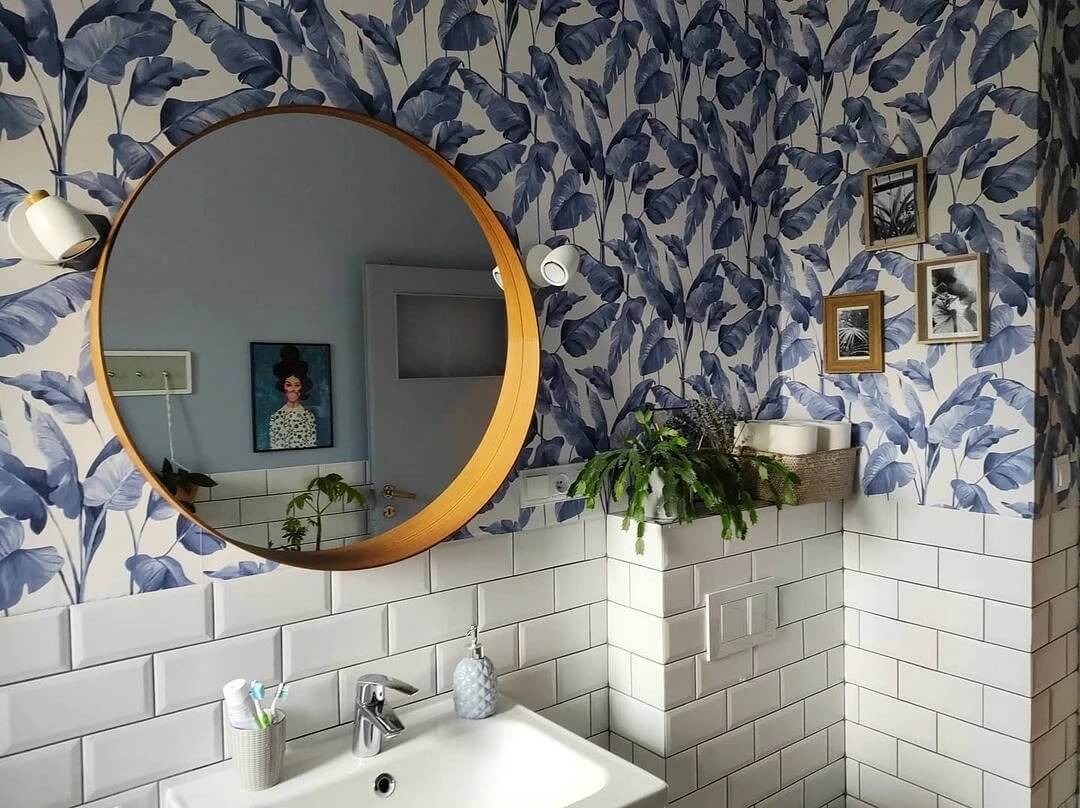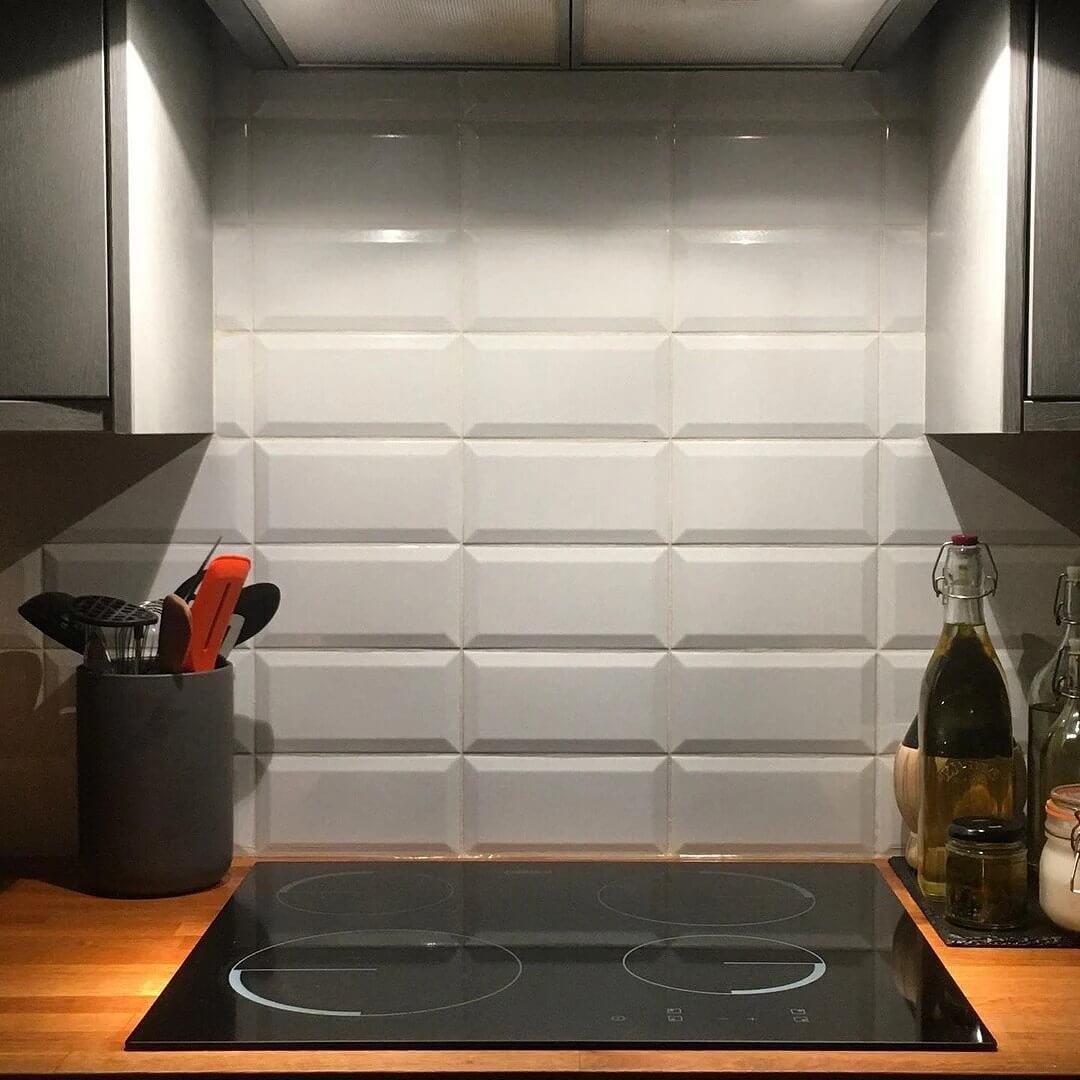Although it is used in interiors quite often, it cannot be called boring – it is more classic than a hackneyed trick. In the article, we will consider the ways of laying hog tiles: from traditional to non-standard – you can choose what will be more relevant for your space.
What is considered a “Hog”
Traditionally, this is the name for rectangular ceramic pieces with a beveled edge – that is, beveled edges. The surface itself is convex. Sometimes ordinary rectangular tiles, without bulges, are also called “hog.” We will be looking at traditional options.
The dimensions of the “hog” can be very different: 10×20 cm, 8.5×28.5 cm, 15×40 cm, and others – it depends on the manufacturer and the collection.
The advantages of this type of cladding
- Various sizes, colors, textures – this type of finish is found in different manufacturers; it is effortless to choose the one you need.
- Timeless design, especially when choosing a classic layout.
- Variety of styling options. Not every tile can be laid out in so many different ways. Thus, it will be possible to create an accent even without changing the color – just using a geometric pattern on the wall.
Types of laying hog tiles
1. Horizontal offset
The most popular brick-like option is horizontal offset. It looks familiar and will fit into any style: from classics to Scandinavian (in the latter, by the way, it is in great demand!). It is important to keep the same offset size in each row, but which size to choose is up to you. More often, use a half-tile offset.
2. Stacked horizontal
The result is the most simple and understandable pattern – the tiles are stacked one after another horizontally without displacement, smooth seams and clear geometry are obtained. This layout is easy to do with your own hands – there will be minimal trimming. And it will fit into any style: modern or classic.
3. Vertical offset
It fits according to the same principle as in the first paragraph, only vertically. Vertical lines can visually increase the height of the ceiling, for example, in a small bathroom, if the entire wall is laid out in this way. It looks fascinating when the cladding is colored.
4. Stacked vertically
Fragments are stacked in stacks parallel to each other but vertically. It looks quite strict and simple but still relevant. Suitable for Scandinavian interior, minimalism, and modern. To diversify the interior with this type of ceramic laying, you can choose a colored material.
5. Horizontal “herringbone”
Herringbone is an appropriate way of laying for different types of materials, including hog tiles. Longer fragments are usually chosen for it. Even if the cladding is neutral, such a layout will add sophistication and charm to the interior and look great in a classic and modern room design.
6. Vertical herringbone
The principle is the same, but the tiles are deployed vertically, not horizontally. If a horizontal herringbone looks appropriate on a small section of the wall and a scale, then a vertical one is still better on a scale.
7. “Herringbone” at an angle of 90 degrees
In this method, one tile is laid with an edge on another at a right angle, imitating a cross fragment. The result is a non-trivial pattern that will look great both on a kitchen backsplash and in the wall decoration in the bathroom. Better for modern interiors.
8. Chess layout
In this case, two tiles are stacked vertically next to each other, two – horizontally. And such “squares” alternate over the entire area of the finish. It looks unusual and interesting, but it should be entered with caution into classic spaces. In modern ones, it’s easy.
9. Diagonally offset
If you want to create an interesting effect, use this type of boar styling. At scale, the diagonal placement of the pieces can even add to the visual increase in space. This is true in small bathrooms.
What is important to consider
Small fragments of cladding are more difficult to lay than large ones. The work of the master will certainly cost more. When choosing non-standard ways of placing the tiles, you need to be prepared for overspending material due to trimming. This means that you will have to spend more and purchase the finishing with a margin.
The width of the seams matters. For small-format ceramics, it is recommended to make thin seams – this also requires the installer’s professionalism.
If you are working with a master and not doing repairs yourself, you should still arrange the fragments of ceramics on the surface in the pattern that you need, try them on, photograph them and show them to the performer. This will allow the master not to make a mistake with the markup, and you will get exactly what you want.
Design ideas
- Choose a color group. It looks unusual. You can decide on such seams not only with a white lining but also brighter. If you are decorating a bathroom or a toilet, all the more, you can go bolder. You won’t spend much time there anyway. The finishing will not get bored.
- Combine several options for laying hog tiles in the same room. For example, three walls can be decorated in one way and one in another, thus accentuating. Get inspired by designer interiors!
- Combine the colors of the tiles on the same wall. True, here it is worth carefully considering the compatibility of shades. Select and apply samples directly in the store. This will make it harder to make mistakes.






















































